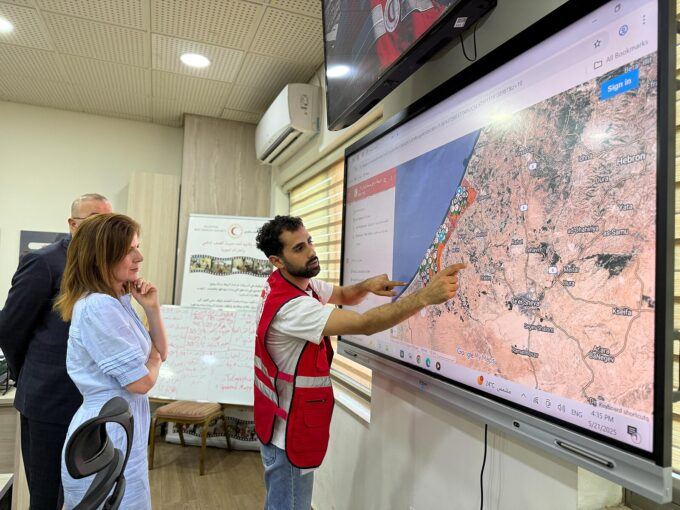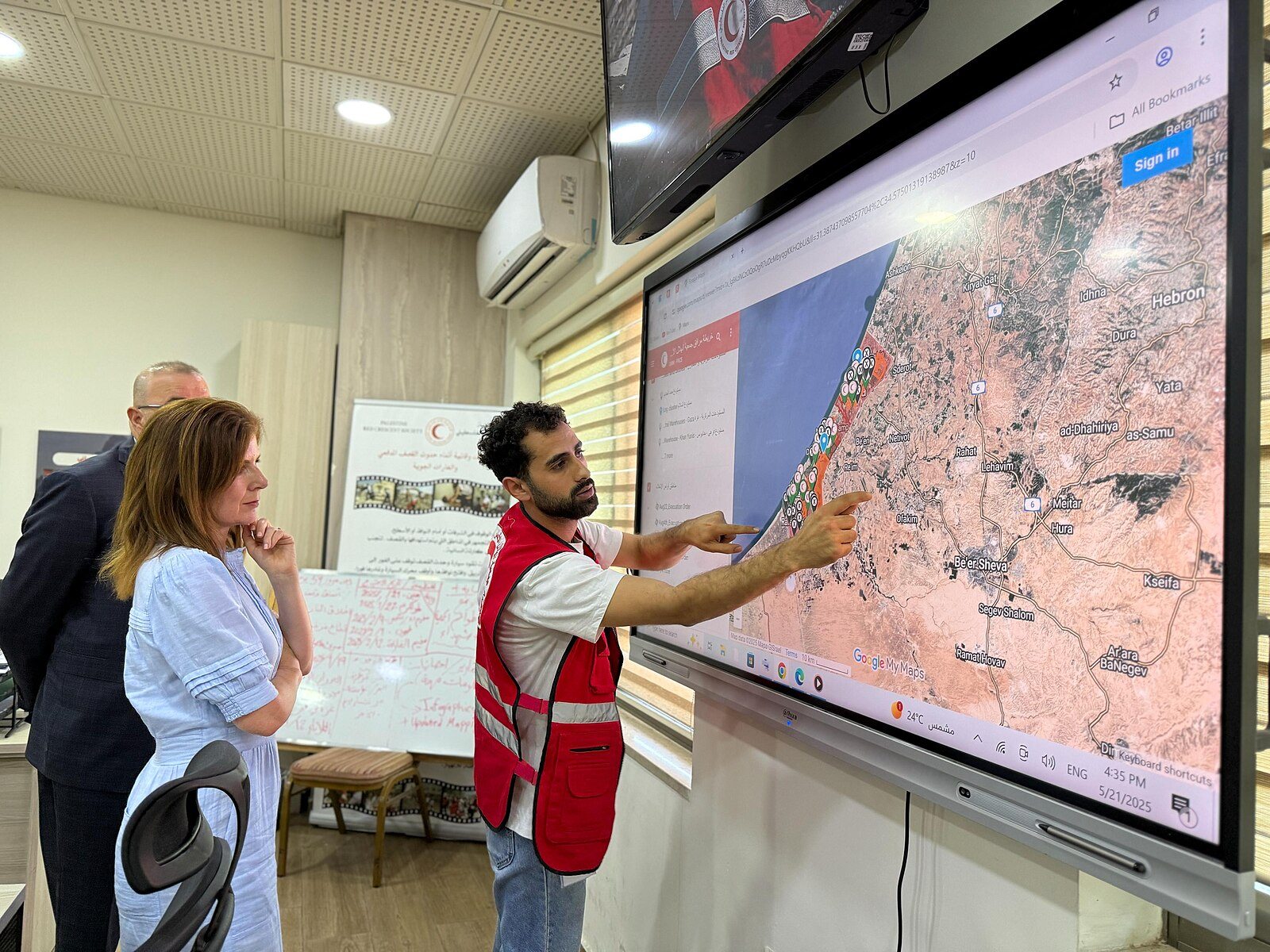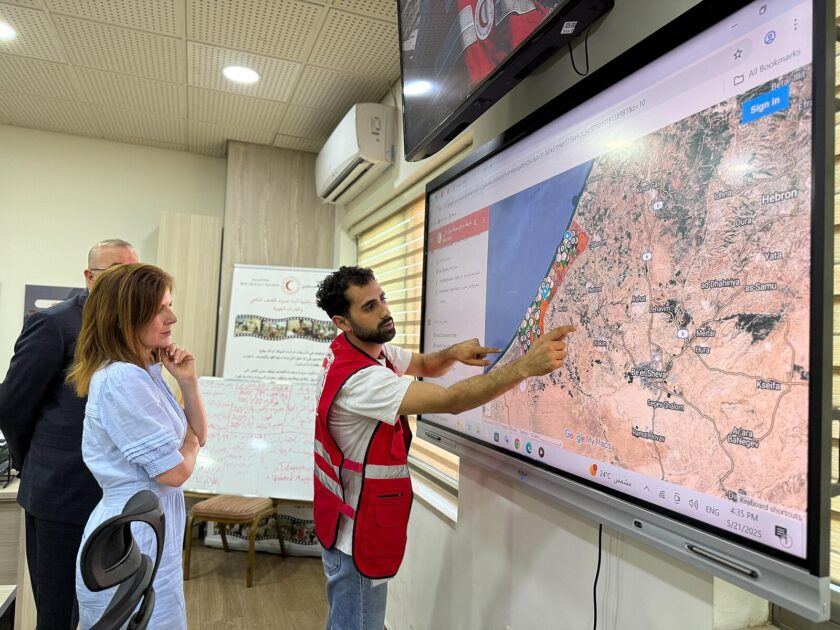






























































Photograph Source: Foreign, Commonwealth & Development Office – CC BY 2.0
At least 27 Palestinians were killed after Israeli soldiers opened fire near an aid distribution hub in Rafah, according to the Ministry of Health in Gaza. It was the third such incident around the Rafah hub in as many days. What we are witnessing in Gaza is not merely a humanitarian crisis or a logistical misstep. It is a man-made catastrophe. It is a calculated design, turning aid into a lure that controls and displaces.
The Gaza Humanitarian Foundation, backed by the U.S. and Israel, promises to feed a starving population. Yet its setup—centralized hubs in Israeli-controlled zones—feels less like salvation and more like a trap. My argument isn’t just about pointing fingers; it’s about unmasking how aid, sold as a lifeline, can morph into a tool of power. These hubs don’t just distribute food; they reshape Gaza’s social and spatial fabric, forcing people into perilous journeys and military choke points under the guise of relief. This isn’t charity—it’s control dressed up as compassion.
Gaza’s crisis is a global flashpoint, a place where 2 million people teeter on the edge of famine after a year of war and an 80-day Israeli blockade that ended in May 2025. The world watches, assuming aid is a neutral good, a bandage on war’s wounds. But when aid becomes a magnet for violence—31 killed on Sunday, three on Monday, 27 on Tuesday—it demands we question its deeper purpose. Are these hubs saving lives or reshaping them to fit a geopolitical agenda? The stakes are human: survival, dignity, and the right to stay on one’s land.
The Gaza Humanitarian Foundation’s system is new, launched May 27, 2025, to bypass traditional aid groups like the UN, which Israel accuses of letting Hamas siphon supplies. Yet the UN and others call this setup unethical, a “death trap” that forces Palestinians to trek long distances through war zones to reach food.
Witnesses describe chaos: gunfire from tanks, drones, and helicopters at the Al-Alam roundabout, a kilometer from the Rafah hub. The Red Cross reported 184 casualties there on Tuesday alone, many with gunshot wounds to the head and chest. The Foundation denies violence at its sites, claiming incidents happen “well beyond” their perimeters. Israel says its troops fired “warning shots” at “suspects” deviating from designated routes. But the pattern is undeniable: crowds gather, shots ring out, bodies pile up.
History shows aid as a tool of control, from colonial powers doling out bread to pacify restless subjects to modern refugee camps that segregate and monitor populations. In the 19th century, British rulers in India used food rations to quell dissent, tying relief to loyalty. During the Irish famine, soup kitchens doubled as conversion hubs, pushing Protestantism on starving Catholics. Today, refugee camps in Jordan or Kenya often serve as de facto holding pens, keeping displaced people in limbo while governments exert oversight. Gaza’s hubs echo this: centralized, militarized, and inaccessible to many, they dictate where people go and who survives. The UN warns this setup risks mass displacement, funneling northern Gazans south, potentially clearing land for Israeli control. It’s not hard to see the chessboard: aid as a pawn in a larger game.
The Foundation’s defenders argue it’s a necessary fix, delivering 21 truckloads of food on Tuesday alone. But the cost is clear—102 dead in eight days, per Gaza’s health ministry. The system’s flaws aren’t accidents; they’re structural. Armed U.S. contractors guard the sites, and Palestinians must navigate Israeli military zones, risking detention or death. The UN, boycotting the program, says it violates humanitarian principles by tying aid to military objectives. When Jake Wood, the Foundation’s ex-Marine head, quit days before the launch, he cited its failure to uphold those principles. His replacement, a Trump-aligned pastor, suggests politics, not neutrality, drives the operation.
Aid in Gaza isn’t just failing—it’s weaponized. It lures the hungry into kill zones, reshaping lives and land under the pretense of help. This isn’t about one tragedy; it’s about a system that makes tragedies inevitable. We must demand aid that reaches people where they are, not where power wants them to be. Otherwise, every box of food risks becoming bait in a deadly game. Gaza’s starving deserve more than a trap disguised as hope.
The post The Deadly Bait of Aid in Gaza appeared first on CounterPunch.org.
This post was originally published on CounterPunch.org.